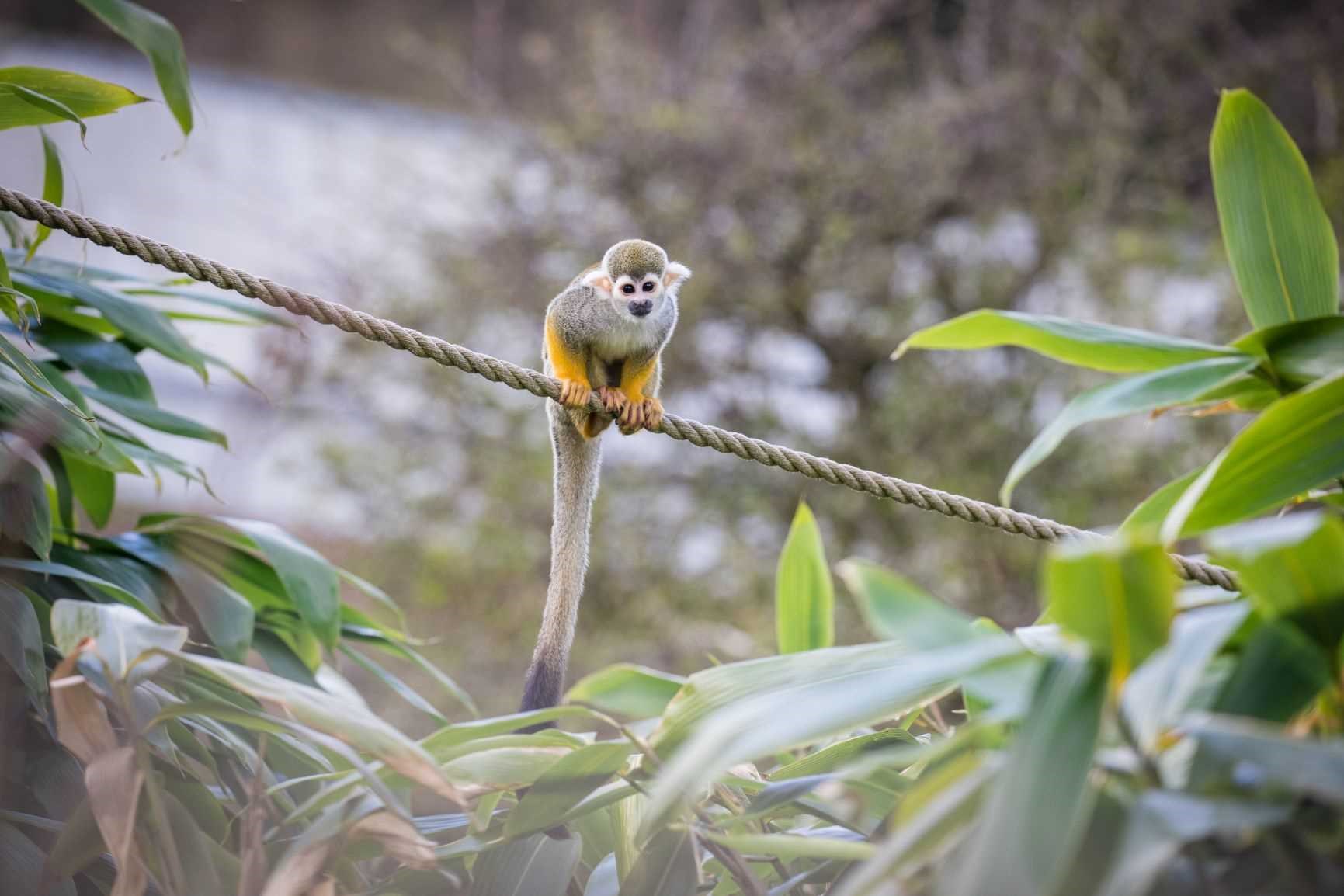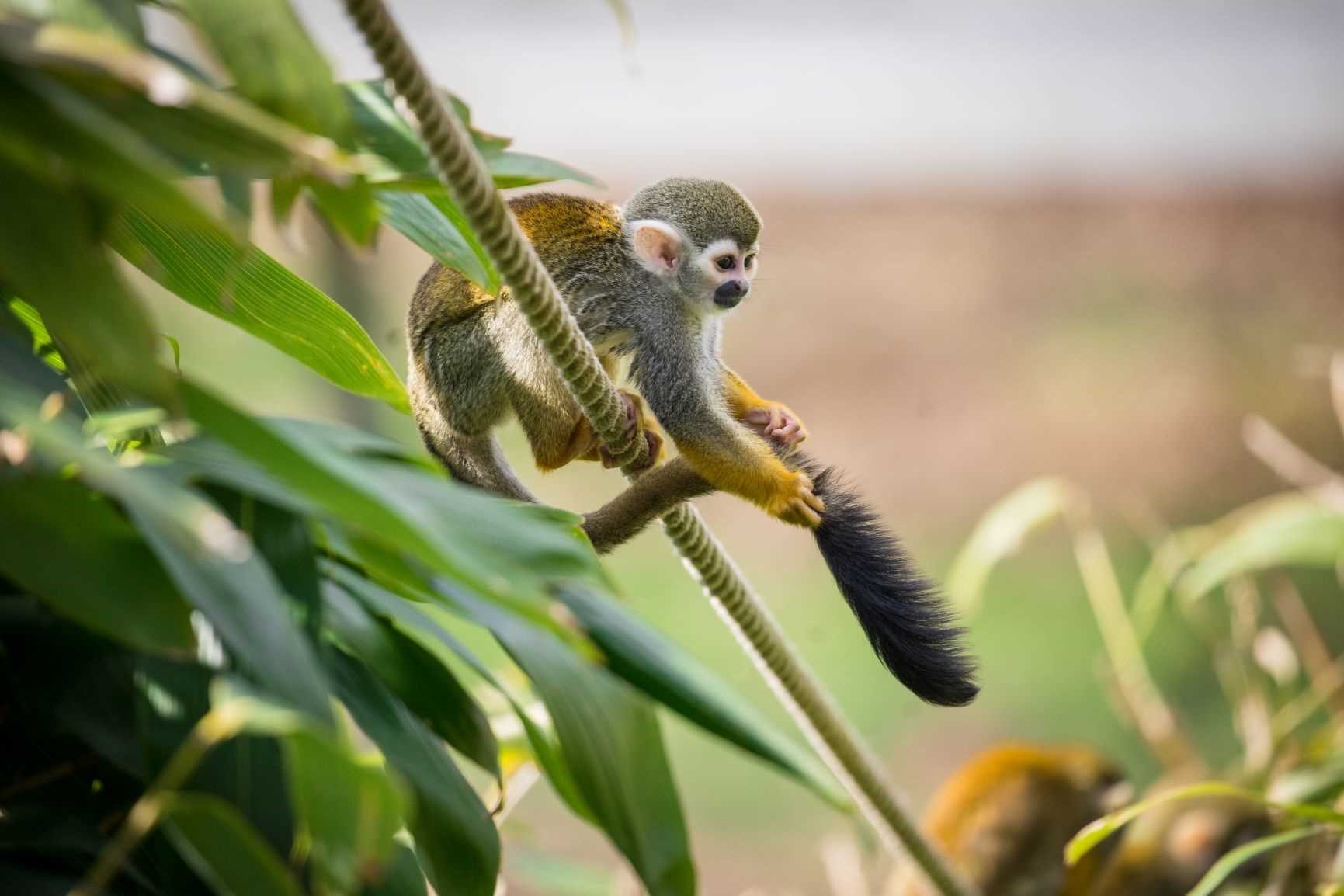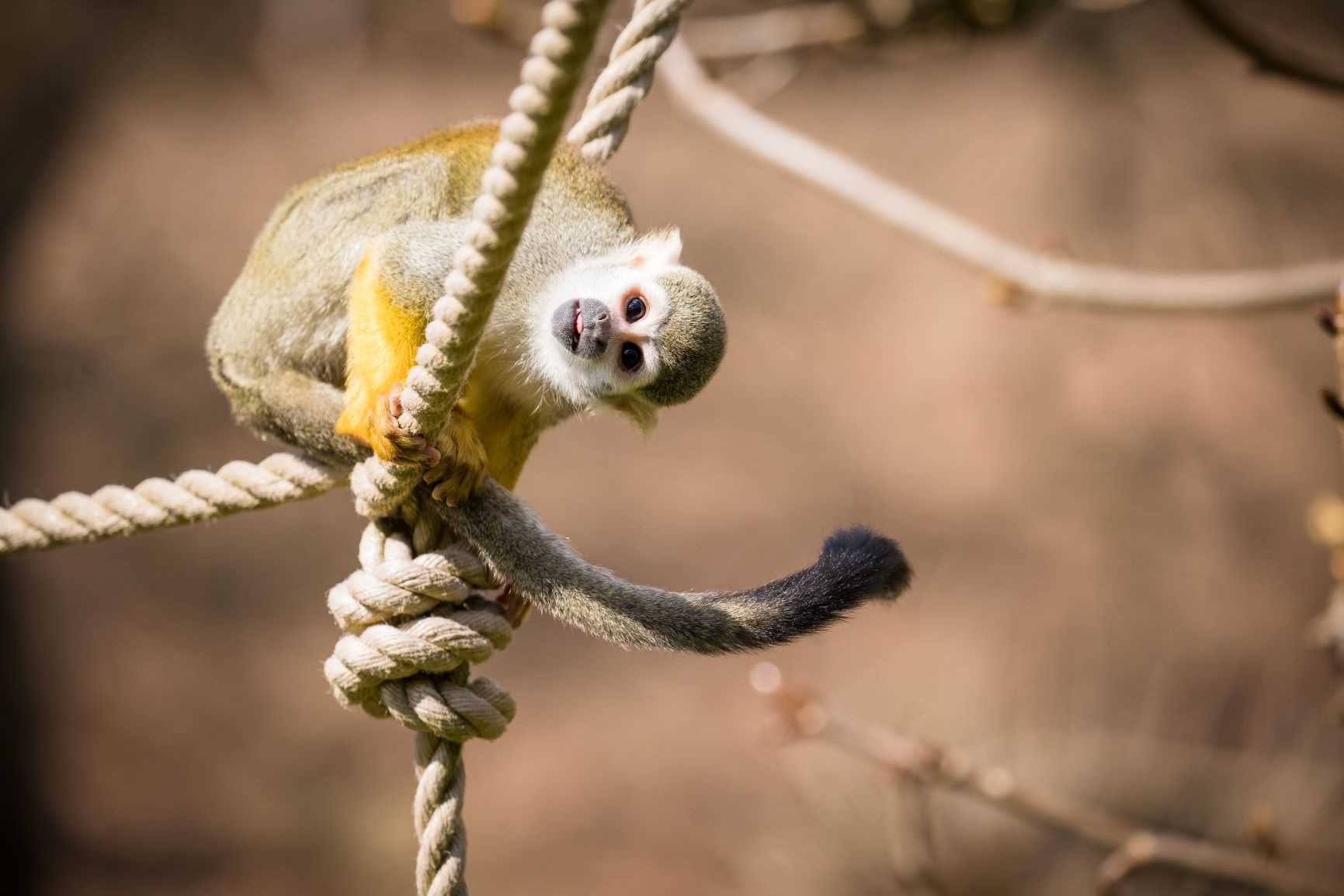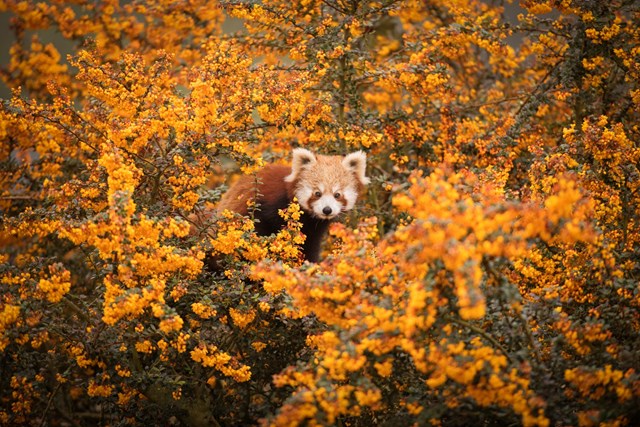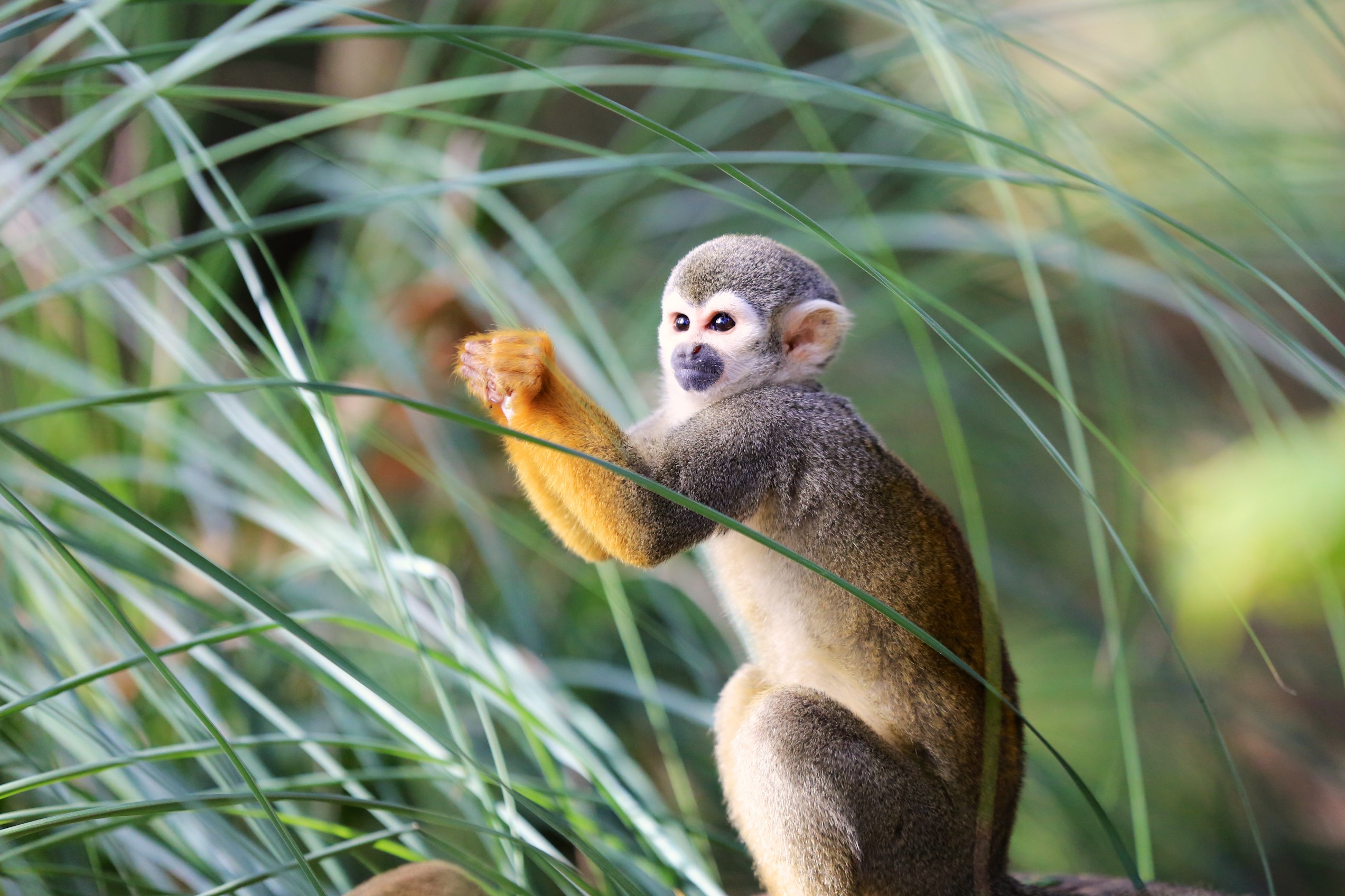
Overview
The smallest of the primate family Cebidae, the Guianan squirrel monkey often measures under 37cm in height. Found in the tropical rainforests of South America, these tiny mammals aren't endangered but are at threat from forest destruction and fragmentation.
The troop of playful squirrel monkeys at Woburn Safari Park can be found in their new enclosure, Monkey Mayhem, in the Foot Safari.
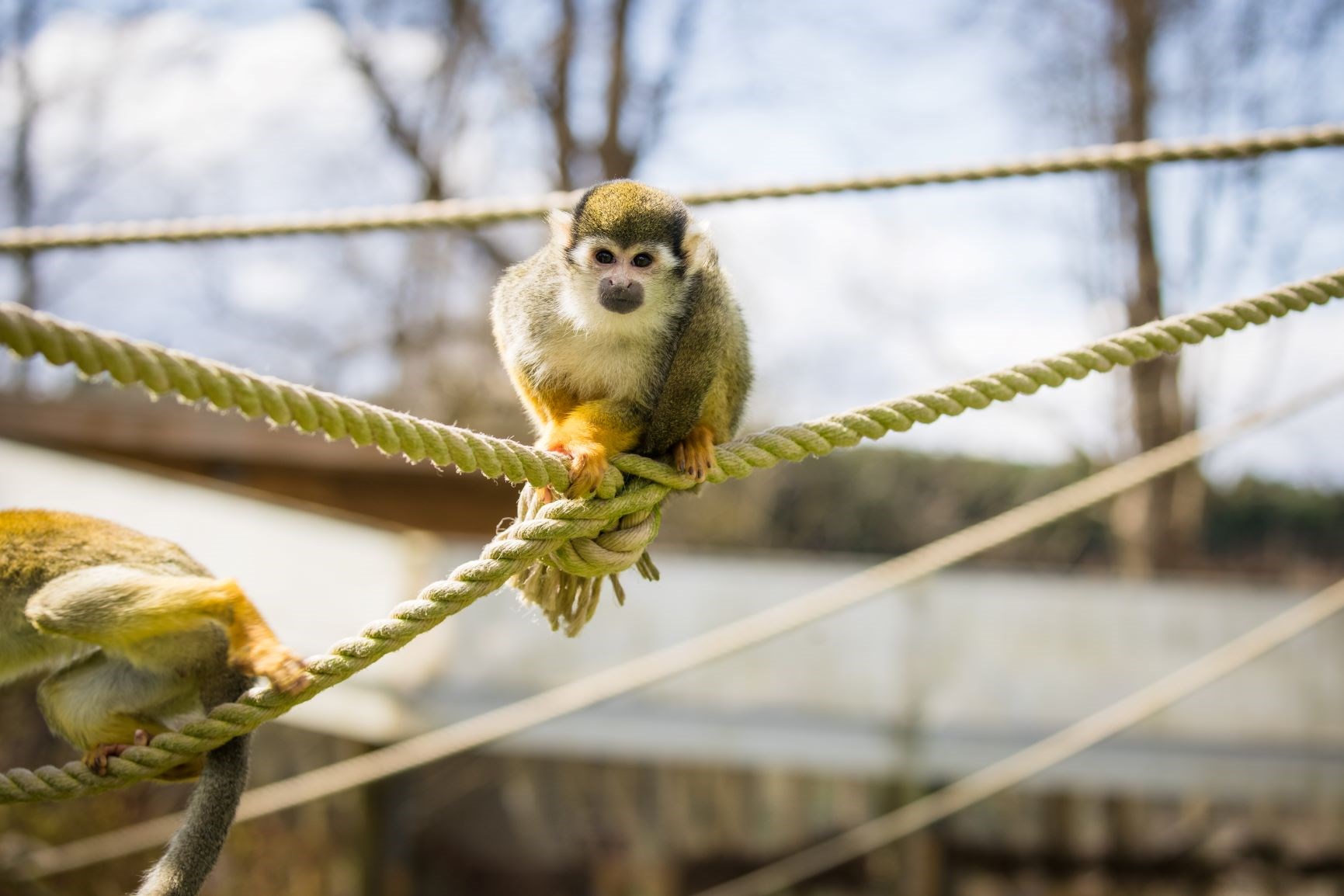
All about us
| Distribution: | South America |
|---|---|
| Habitat: | Tropical rainforest, tropical dry forest. |
| Height: | Males 27 - 28cm and females 28 - 37cm |
| Weight: | Males 700 - 1100 grams and females between 500 - 750 grams |
| Lifespan: | 20 - 25 years |
| Threats: | Forest destruction and fragmentation. |
Scientific name: Saimiri sciureus
Squirrel monkeys communicate by sound, sight and scent; twenty different vocalizations have been noted. A purring sound is frequently made proceeding and during a mating sequence. This is a soft vocalization which cannot be heard at any great distance and is similar to the purr emitted by young, before and during suckling or the sounds females make when nuzzling new born.

squirrel monkeys facts
Squirrel monkeys rarely venture to the forest floor. They travel long distances through the lower canopy during the day, frequently climbing and leaping through the trees to find a variety of food. They sleep together at night; huddling in small groups in order to protect themselves from predators such as snakes, wild cats and birds of prey.
The Guianan squirrel monkey has a short coat, generally olive on the back; the underside a paler yellow; limbs, hands, and feet are orange/yellow colour. The face, throat and ears are white, with contrasting black muzzle. White fur over the eyes forms a pointed arch and the crown dark green to grey/black. Their tails are long (37-45cm) and not prehensile (e.g. not used to grip objects), but used for balance when climbing through the trees.
Squirrel monkeys prefer to eat fruit and insects, they forage or hunt for them on the surface of live leaves or by unfolding leaf curls of dead foliage. Thanks to their small, agile bodies they are able to easily climb to the ends of branches to retrieve fruit. Occasionally these monkeys will also dine on leaves, seeds, arthropods, bird eggs and some small vertebrates such as bats and small birds.
Squirrel monkeys are very social animals, they live in groups which can vary from 20-35 or up to 200 or more individuals. These large social structures are subdivided into adult male groups, mother and infant groups and juveniles. The core of the group is made up of several dominant females, it is only during breeding season when mature males increase in weight and seek the company of the females.
Females prefer to live with the highest ranking male during the mating season. However, this male is often so busy defending his territory, that he has little time for the females, therefore the lower ranking males are more likely to breed with the females. Males display their genitals to females to show dominance but also as an invitation for courtship and recognition or greeting.
After a gestation period of 150 - 170 days, 1 infant is born. The mother cares for the young monkey by carrying it around on her back. Females provide all parental care, with other young females helping to take care of young. After about 5 - 10 weeks the baby starts to leave the mother, exploring their surroundings and by 10 months old it will be independent. Females mature at about two years, males four years of age.
Today the Guianan squirrel monkey has been assessed as Least Concern and is listed on CITES as Appendix II. Populations undoubtedly are declining in some areas due to forest destruction and fragmentation.
The development of plantations is a serious component of habitat destruction and fragmentation. Squirrel monkeys rarely come to the ground, travelling primarily on branches between the treetops. They will not leap horizontally between trees if the distance is too great. Logging roads, clearings for telephone and electric power lines, or other practices leading to forest fragmentation restrict populations to smaller areas of forest. This also decreases their ability to find food during certain times of year.
Squirrel monkeys are often found close to human settlements and although they are not commonly hunted for food because of their small size, they are frequently trapped for the pet market or for medical research. There are conservation action plans in South America and the species occurs in many protected areas. Many dedicated people are working on research studies and breeding programmes in captivity to help secure the future of these primates.
They are part of an EEP, European Endangered Species Programme. The EEP is the most intensive type of population management for a species kept in European zoos. Each EEP has a coordinator, who is assisted by a Species Committee. They are responsible for collecting all the data on births, deaths, and transfers, carrying out demographical and genetical analyses, and producing a plan for the future management of the species. Together with the Species Committee, recommendations are made each year on which animals should breed or not breed, which individual animals should go from one zoo to another, and so on.
